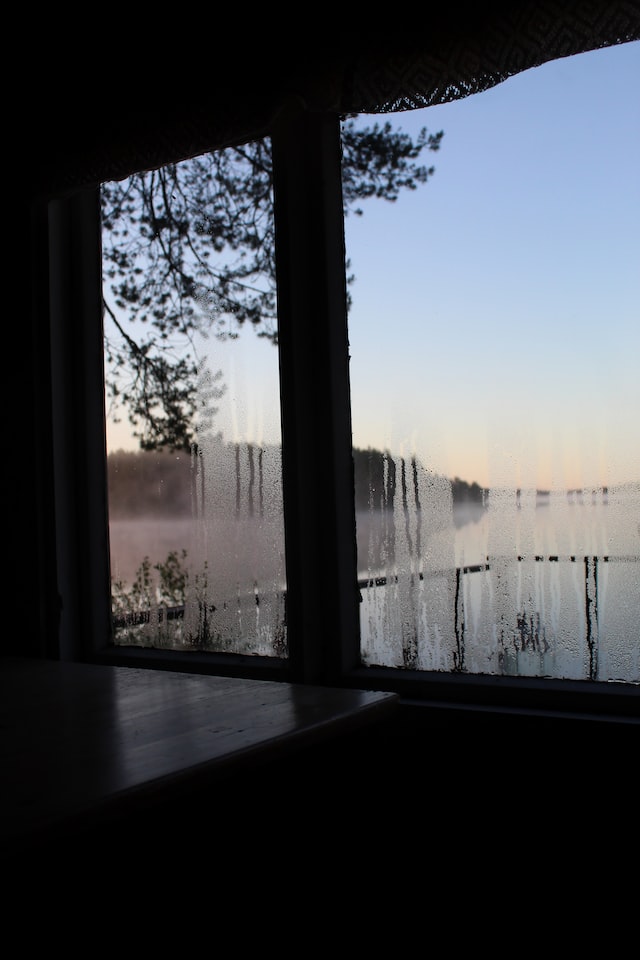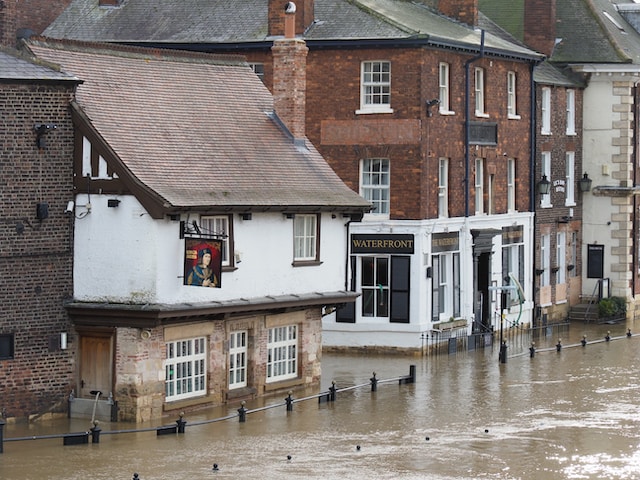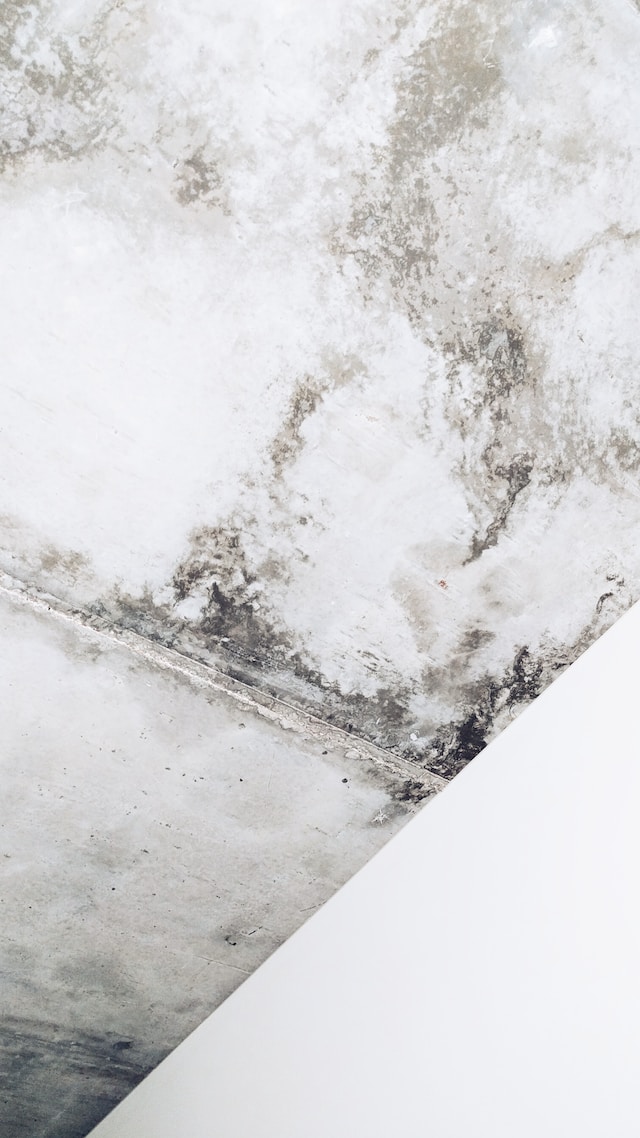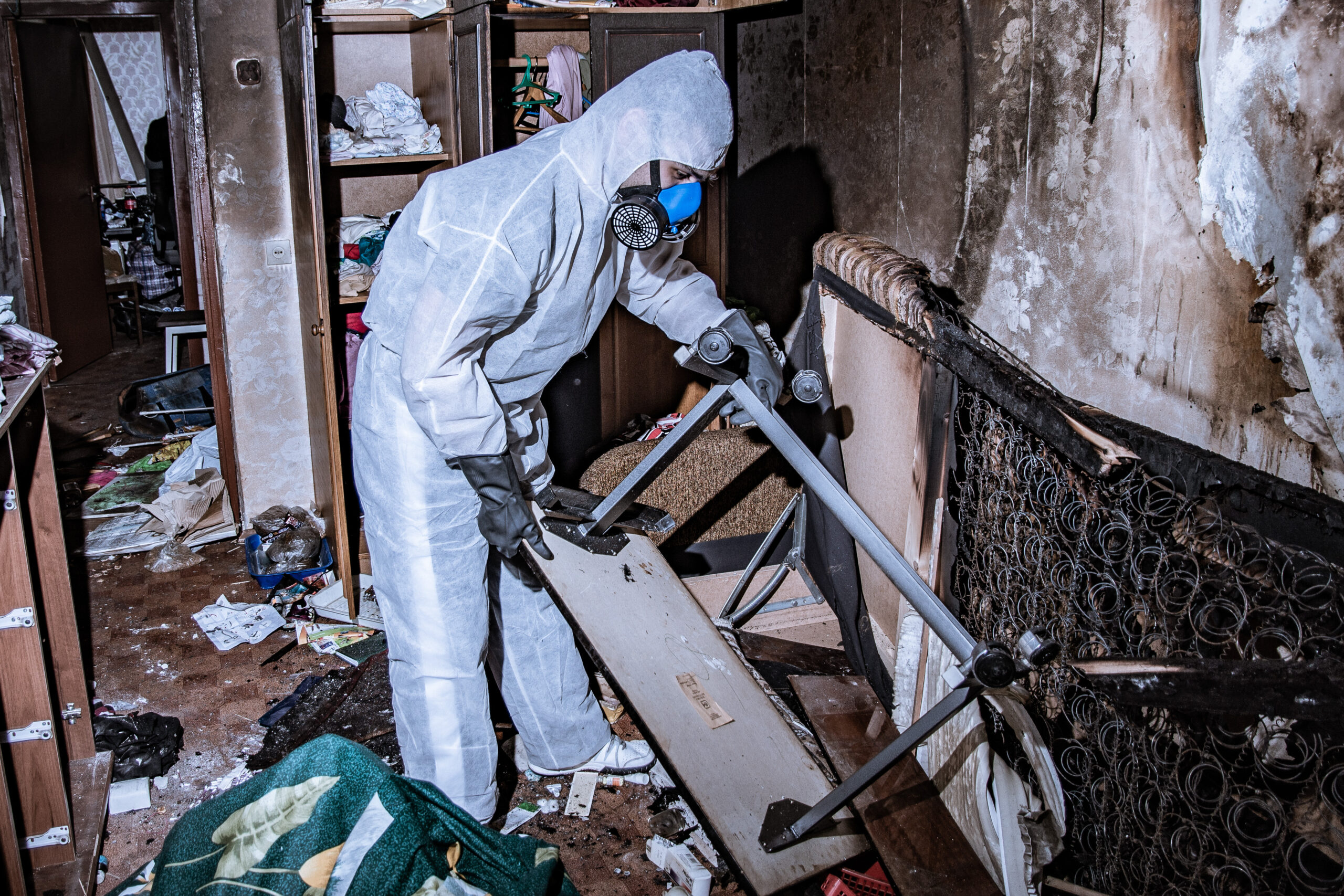Have you ever taken a deep breath, filled your lungs with air only to catch an unpleasant musty smell? The culprit is often hiding in plain sight – damp. In older buildings or homes poorly shielded from water ingress, it’s a common but insidious foe.
Dampness isn’t just about peeling wallpaper and mould growth, although these are certainly distressing signs. It’s like that unwelcome house guest overstaying their welcome; silent yet devastatingly impactful on your home’s value.
The real question here is: “How much does damp devalue a house?“. It might surprise you how significantly this seemingly small issue can affect the marketability of your property. Not to mention the potential health issues for those living within its cold walls.
Today, we’re exploring every single aspect in depth.
Table Of Contents:
- Understanding Damp Issues and Their Impact on Property Value
- Types of Damp and Their Causes
- Health Effects of Damp and Mould Growth
- Assessing Damp Problems in a Property
- Damp Treatment and Repair Options
- Impact of Damp on Selling a Property
- Legal Requirements and Mortgage Lenders
- Preventing Damp Issues and Maintaining a Damp-Free Home
- Expert Advice and Professional Help
- FAQs in Relation to How Much Does Damp Devalue a House?
- Conclusion
Understanding Damp Issues and Their Impact on Property Value
If you’ve ever asked the question, “How much does damp devalue a house?”, you’re not alone. Googling the answer might surprise you: it can cause a decline anywhere between 10% – 50% in value. A shocking statistic, isn’t it? This is why understanding damp issues becomes crucial.
Damp doesn’t just leave unsightly marks or an unpleasant musty smell; its implications are far more severe. From health problems like respiratory issues to potential legal action for failing to disclose known damp problems, this persistent issue packs quite the punch when left untreated.
The correlation between damp and property devaluation is direct because of several factors. First off, mortgage lenders often hesitate before lending money against properties with bad damp due to risks associated with repairs and health hazards – that’s if they provide loans at all. Plus, potential buyers may be deterred by signs of water ingress such as peeling wallpaper or mould growth on skirting boards – leading them towards other properties instead.
The Direct Correlation Between Damp and Property Devaluation
Rising damp occurs when ground rises above your home’s existing damp-proof courses causing water seeping into walls which could lead to dry rot amongst others things damaging internal structures drastically reducing marketability along those cash buyer who want quick sale will typically offer significantly less than what would otherwise have been expected even if treatment cost relatively low because perceived hassle inconvenience involved rectifying these types damage substantial let’s face it no one wants move into new place start dealing condensation straight away.
Types of Damp and Their Causes
Damp is a common issue in UK homes, but it’s not all the same. There are three main types: rising damp, penetrating damp, and condensation damp.
Rising Damp and Its Causes
Rising damp occurs when groundwater rises up through walls or floors due to capillary action. It’s typically found on ground floor levels where water from the ground rises into brickwork or other absorbent materials like wood.
This problem can lead to unsightly damp patches, peeling wallpaper, musty odours, and potential health issues if left untreated. If you’re seeing these signs around your skirting boards or lower walls, then you may be dealing with this type of issue.
Penetrating Damp and Its Causes
The second type is penetrating damp, caused by water ingress through external walls due to defects such as leaking pipes or poor weatherproofing. This kind usually shows up as wet spots on internal surfaces regardless of their height off the ground – hence its name.
If you notice dark patches appearing after rain that take ages to dry out even after sunshine comes back again? You might have penetrating damp on your hands.
Condensation Damp and Its Cause
Last but certainly not least we’ve got condensation-based problems. They occur when moist air cools rapidly upon contact with cold surfaces like windows or poorly insulated exterior walls leading us towards those pesky black mould spots associated with bad ventilation systems. Plus let’s not forget about our unwelcome guest – unpleasant musty smell.
No matter the type of damp, it’s vital to get a proper diagnosis and treatment plan. These problems can significantly impact your home’s value – with damp issues being known to cause up to 20% devaluation.
Bear in mind that around 70% of British homes are affected by condensation while only about 20% suffer from rising damp – knowing this difference is key when seeking help.
Get to know the big three in damp types – rising, penetrating, and condensation. They each have their own causes and tell-tale signs. Rising damp comes from groundwater making its way up your walls or floors; you’ll notice funky smells and unattractive stains near baseboards or on lower parts of walls. Penetrating damp sneaks in through flaws in exterior walls, leaving behind stubborn wet spots after it rains. Cond
Health Effects of Damp and Mould Growth
Living in a house with damp issues is more than just an aesthetic problem. It’s a health hazard, especially when mould begins to grow due to the excess moisture. Respiratory problems are common among occupants exposed to such conditions.
Mould spores floating in the air can easily be breathed into our lungs, causing respiratory distress over time. This can trigger asthma attacks for those already diagnosed with this condition. Additionally, allergies might become more frequent as your immune system reacts negatively to these unwanted invaders.
The unpleasant musty smell that accompanies mould growth isn’t only off-putting but also indicative of poor indoor air quality which could lead to other health complications if left untreated.
Beneath the surface of these potential risks lies a glimmer of hope. There are ways you can mitigate these risks before they take a toll on your well-being or further depreciate your property value.
The Threat To Children And The Elderly
Kids and elderly people often bear the brunt of these health effects because their immune systems aren’t fully developed or have weakened over time respectively. Young children may experience developmental delays while older adults may see worsening symptoms related specifically towards age-related illnesses exacerbated by continuous exposure to moulds found commonly in older buildings suffering from rising damp issues.
A Note On Mental Health
Beyond physical discomfort, prolonged exposure could also impact mental wellbeing leading one feeling constantly tired due excessive coughing fits during nights disrupting normal sleep patterns – thus making them more susceptible to anxiety and depression.
Take Control of Your Health
Be mindful of the potential risks and take action quickly if you suspect any issues. If you spot damp patches or a musty odour in your home, don’t ignore them. Seek help immediately before these issues escalate into major health problems.
Don’t let damp and mold in your home get you down. It’s more than just an eyesore – it can be a real health hazard, particularly for children and older folks. From respiratory problems to triggering allergies, making asthma worse, messing with sleep which could lead to anxiety or depression – the list goes on. But remember this: you’re not powerless here. If there are signs of dampness or if you catch a whiff of something musty at home, act fast to safeguard your well-being.
Assessing Damp Problems in a Property
If you’re trying to sort out your home following spotting indications of damp difficulties, it is essential to determine the magnitude of harm. Mould growth and water stains are common indicators that shouldn’t be ignored.
The Importance of a Damp Survey
Determining whether or not your property has been affected by damp isn’t always straightforward. It’s not just about seeing mould grow or noticing an unpleasant musty smell – there can be more underlying issues.
A detailed assessment will help identify the source of moisture ingress – leaking pipes causing damp patches on walls, rising ground water seeping through floors, condensation forming due to poor ventilation; these are all potential culprits contributing towards those dreaded damp problems.
Tackling each type requires specific knowledge and skillsets. If left untreated, this menace could lead to further deterioration such as peeling wallpaper, dry rot in skirting boards and even structural damage over time.
An effective strategy involves identifying what kind of damp issue is present – penetrating? Rising? Condensation perhaps? Then proceeding with appropriate treatment options based upon findings from the inspection report. Remember: You don’t need special powers like Superman’s X-ray vision for this.
Action Plan Post-Survey
The action plan post-survey should ideally involve getting rid off any excess moisture inside the building envelope via improving ventilation or fixing leaks while simultaneously applying suitable protective measures externally such as installation/replacement of defective dampproof courses if required. Note: You might feel like Bob The Builder with all this DIY, but the health of your property is on the line.
Following these steps will not only fix existing issues but also prevent recurrence in future. But remember: it’s always better to ask for professional help if you’re unsure or overwhelmed by damp problems – because there’s nothing like peace of mind knowing that experts have got your back.
It’s vital to catch damp issues in your home early. This goes beyond just mould and musty odors, you need a thorough check-up to nail down the moisture source – whether it’s leaks, rising groundwater or lousy ventilation. Each problem needs its own fix; if left unchecked, damp can cause more damage over time. After the survey, make sure you cut back on any extra moisture.
Damp Treatment and Repair Options
No single remedy is suitable for all cases of dampness. Different types of damp require specific treatments for effectiveness.
Rising Damp Treatment
Rising damp often requires a process called ‘damp-proofing’. It involves installing a barrier in the walls to prevent moisture from rising up. Treatment for rising damp can be expensive, with estimates ranging from two to six thousand pounds depending on the severity of the problem. Property Care Association provides more information on this.
Treating Penetrating Damp
If you’ve got penetrating damp – that is water ingress through external walls – repairs may involve improving exterior wall protection or fixing leaking pipes. Once the source of water seeping into your property is fixed, drying out and repairing any damaged plasterwork or decor follows suit.
Dealing with Condensation Damp Issues
Condensation usually results from excess moist air hitting cold surfaces inside your home causing water droplets to form. The trick here lies in improving ventilation which helps regulate indoor humidity levels effectively reducing condensation build-up.
Mould Growth Resulting From Untreated Damps
The presence of mould growth signifies untreated damps over time. This poses health issues as well as accelerates property devaluation due to potential buyers’ concern about underlying structural problems. CDC’s guide provides further insight into dealing with mould growths resulting from untreated damps.
Repairing Damp Damage
Once the source of damp is treated, repairing any damage caused by these issues becomes paramount. This could involve replastering walls, replacing damaged skirting boards or redecorating.
No matter what type of damp issue you’re dealing with, always remember that swift action and proper treatment are your best defence against further devaluation of your property due to damp-related damages.
Impact of Damp on Selling a Property
Damp issues can turn your property sale into an uphill battle. They’re a major deterrent for potential buyers and mortgage lenders alike, often resulting in significant devaluation.
Buyers are savvy; they don’t want to inherit damp problems that could cause health issues or lead to costly repairs. Mould growth is particularly off-putting as it not only looks bad but also poses serious health risks such as respiratory problems and asthma attacks.
Mortgage lenders are equally cautious when it comes to lending money against properties with damp damage. Some might refuse outright while others may provide loans but at higher interest rates, which puts another hurdle between you and prospective buyers.
The Challenges of Selling a Damp Property
Selling a house riddled with damp patches, musty odours, or worse – dry rot – is no easy feat. It’s like trying to sell ice cream during winter – doable, but far from straightforward. Potential buyers might be put off by the sight of peeling wallpaper or water stains on the skirting boards.
In older buildings where rising damp is common due to faulty or non-existent damp-proof courses, you’ll need more than just air fresheners and strategically placed furniture to get that sale over the line.
Legal Requirements When Selling Properties With Damp Issues
Besides scaring away potential buyers and making mortgage lenders jittery, sellers have legal obligations too. In fact, if there’s known damp damage left untreated before selling your property without informing any prospective buyer about this issue will invite unwanted legal action later down the line. Remember honesty pays, especially when it comes to the property questionnaire where full disclosure is a must.
Wrapping it up, selling a place with damp problems might seem scary, but it’s doable. You just need to get the hang of these hurdles and find solid fixes like boosting airflow or asking for expert help.
Selling a property with damp issues can lower its value and spook potential buyers or lenders. Mold growth or dry rot signs could make prospects wary, and you’re legally required to spill the beans about such problems. But don’t panic; by confronting these hurdles directly – whether that’s enhancing airflow or asking for professional help – you’ve got this.
Legal Requirements and Mortgage Lenders
When it comes to damp issues, sellers have legal obligations. It’s not just a question of making sure your dwelling stays dry; it is legally binding. In the UK, you’re required to disclose any known damp problems in your property.
This isn’t something you can sweep under the carpet – or behind the skirting boards. You must be honest with potential buyers about these issues. If you fail to do so, this could lead to legal action down the line.
The Royal Institution of Chartered Surveyors (RICS), provides guidelines on how homeowners should report such issues in their seller’s property questionnaire. Being transparent here will protect both parties involved in a sale from unnecessary headaches later on.
Mortgage lenders’ perspective on damp problems
Mortgage lenders are cautious when it comes to lending money for properties with existing damage – especially if that includes rising or penetrating damp. Damp is viewed as more than an aesthetic issue by mortgage providers; they see it as structural damage which may affect the long-term value of a property.
Lenders want assurance that their investment won’t go underwater because water’s coming into play where it shouldn’t.
As part of assessing risk, most lenders ask for a comprehensive survey before agreeing to provide loans for older buildings suspected of having moisture-related complications like mould growth and peeling wallpaper.
These assessments help them decide whether providing funds is viable or not.
Treating Damp Before Selling: A Wise Move?
If you discover signs of damp before selling your house, getting professional treatment might be worth considering. While this might require some investment, it can increase your property’s sale price and appeal to a broader market – including those who need mortgages.
So while damp may seem like just another homeowner headache, handling it responsibly could save you legal trouble and make selling your house a smoother process.
Handling damp goes beyond just house upkeep—it’s a legal and financial matter too. In the UK, it’s law to be upfront about any damp issues when selling your home, this helps avoid future disagreements. Banks view damp as potential structural harm that could lower property value, making them hesitant to back such properties. Fixing up any signs of damp before you sell can actually raise your asking price and attract more buyers.
Preventing Damp Issues and Maintaining a Damp-Free Home
Keeping your home free from damp is more than just an aesthetic concern. It is essential to protect the worth of your property, ensure a healthy home atmosphere and evade needless repair expenses by preserving your residence from damp. Let’s explore some effective ways to prevent moisture build-up that can lead to various types of damps.
The first line of defence against rising damp is installing or maintaining damp-proof courses. These barriers stop ground water from seeping into external walls, keeping the lower sections of your house dry.
To tackle condensation dampness, improving ventilation in homes is crucial. Simple habits like opening windows daily, using extractor fans in kitchens and bathrooms or even investing in dehumidifiers can make all the difference by reducing excess moisture levels.
Tips for preventing penetrating damp
Penetrating damp often occurs due to water ingress through structural faults such as leaking pipes or damaged roofing. Regularly inspecting these areas and fixing any issues promptly helps keep this type at bay.
Maintaining older buildings
In older buildings where materials are susceptible to decay over time causing damage such as dry rot, it’s important not only to treat existing problems but also to take preventive measures against potential ones by applying appropriate treatments regularly on vulnerable surfaces like skirting boards.
Avoiding health risks related to mould growth
Damps left untreated create ideal conditions for black mould to grow, which leads to respiratory problems among other health effects, including asthma attacks – another reason why prevention should be taken seriously. To avoid these harmful effects, maintain good airflow throughout the home, especially in colder spots where condensation tends to form easily, thus preventing growth.
So, there you have it. By taking the necessary precautions, your home will be a healthier and more desirable place to live, as well as retain its worth in terms of property value.
Make sure your home stays dry, not only for its appearance but also to maintain its worth and health. Use damp-proof methods to prevent groundwater from creeping in and ensure good ventilation to reduce condensation. Regularly check the structural parts of your house for any signs of penetrating dampness. If you’re living in an older building, treat materials that are prone to decay early on. Keep a close eye out for mold growth.
Expert Advice and Professional Help
Addressing damp issues can feel like a mammoth task, but don’t fret. The first step is to identify the type of damp issue you’re dealing with; it could be rising damp, penetrating damp, or condensation.
Rising and penetrating damps are typically caused by water ingress from external walls or ground rises while condensation happens when moist air comes into contact with cold surfaces within your home. But how do you differentiate between these types?
You’ll need an expert eye for that. Reputable specialists such as our team who have vast experience in identifying and treating various kinds of damps, can help immensely.
The Importance of Getting a Property Questionnaire
A comprehensive property questionnaire filled out by experts will give potential buyers all the information they need about any past or present issues with your house including any signs of mould growth, dry rot, peeling wallpaper etc., which are common indicators of different types of dampness.
This transparency not only puts their mind at ease but also makes them more likely to consider buying despite known problems since they know exactly what they’re getting into. You might think it devalues your property because every little detail is laid bare – trust me on this one – honesty pays off.
Picking the Right Specialist
Selecting a specialist isn’t just about finding someone who can treat your problem effectively though. You want someone who’ll work alongside mortgage lenders if needed so there’s no hiccup during sale time due to untreated moisture-related damage lurking behind skirting boards.
Bear in mind that not all specialists offer comprehensive services. So, do your homework and choose a company that does more than just damp proofing – one that can also deal with mould growth, dry rot, or even water damage due to leaking pipes.
It’s like picking the right mechanic for your car; you wouldn’t want someone who only knows how to fix engines when you have a flat tyre, would you?
Don’t let damp issues give you the jitters. Identifying the type of damp is key, whether it’s rising, penetrating or condensation. Call in experts like ours for a spot-on diagnosis and treatment plan. Be open about these issues with potential buyers through a detailed property questionnaire; honesty can be your best selling point.
FAQs in Relation to How Much Does Damp Devalue a House?
Will damp devalue a house?
Damp can indeed knock off up to 53% of your property’s value. It creates repair costs, health concerns, and makes selling tougher.
Can you sell a house with damp issues?
Selling a house with damp is possible but challenging. Buyers might be put off or demand price reductions due to potential repair work.
Is rising damp expensive to fix?
Rising damp treatment in the UK isn’t cheap – it usually ranges between £2,000 and £6,000 depending on the severity and size of the area affected.
How much does damp proofing cost UK?
In general, professional damp proofing services can range from £200 for small jobs, upwards of several thousand pounds for larger homes or severe cases.
Conclusion
Unmasking the reality of damp is like unveiling a hidden villain. The insidious effects are clear: it’s not just about musty smells and peeling wallpaper; it’s a substantial devaluation game. How much does damp devalue a house? It could be as drastic as halving its market price.
There’s rising, penetrating, and condensation – three types of damps that eat away at your property value silently but surely. Yet with knowledge comes power to prevent moisture build-up and keep your home free from these uninvited guests.
Health issues lurk in those cold walls too – asthma attacks, allergies, respiratory problems; another reason potential buyers might walk away from a deal if left untreated.
The takeaway here is simple: don’t underestimate the damage caused by dampness in homes. Take immediate action for treatment or prevention before selling because this can make all the difference between losing or gaining potential buyers’ interest in today’s competitive property market.
Damp-proof courses aren’t optional anymore – they’re essential if you want to attract mortgage lenders who won’t provide loans on properties showing signs of water seeping through their structures.
Fixing damp isn’t just about keeping cash in your pocket. It’s also about making a healthier home and maintaining its worth.




